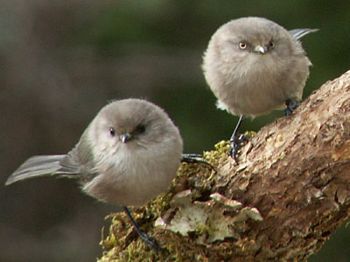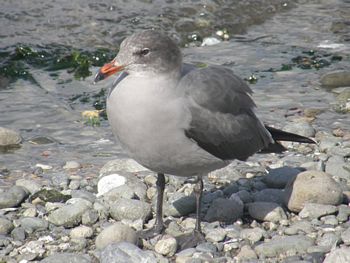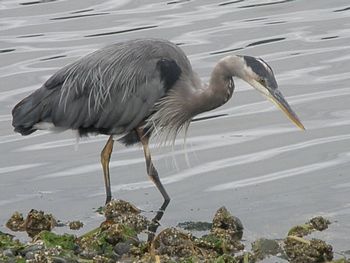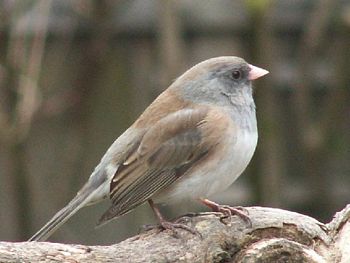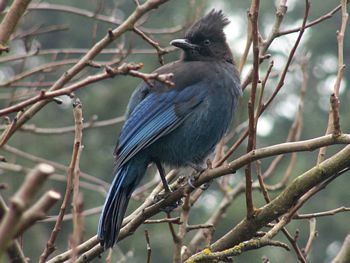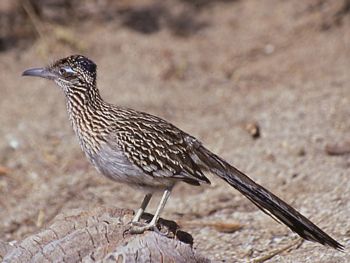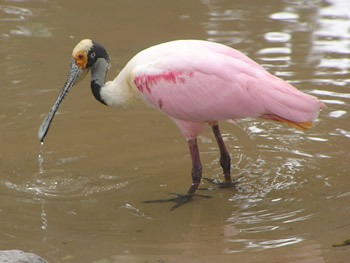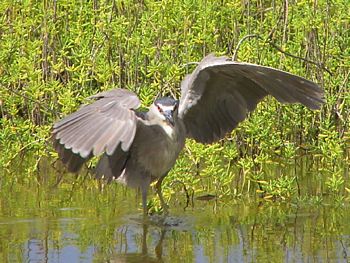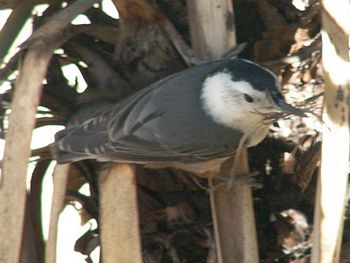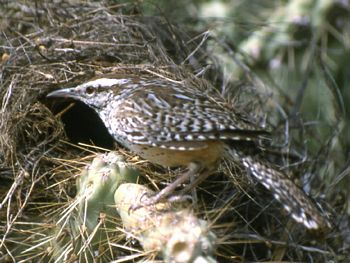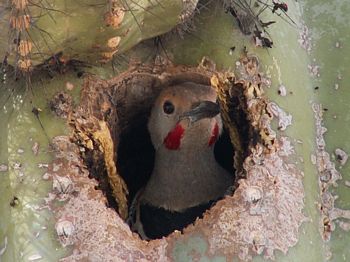|
|
|
The female Bushtit has yellow eyes but the male doesn't. |
|
The Heermann’s Gull has a current population of about 150,000 pairs, 90% nest on the island of Rasa in the Gulf of California. |
| |
|
|
|
|
|
The Great Blue Heron is the largest heron in North America and nests in trees in a colony called a heronry.
|
|
The Golden-crowned Kinglet can survive very cold temperatures, down to -25 degrees, often huddling together in empty squirrel nests and tree cavities.
|
| |
|
|
|
|
|
The Black Oystercatcher scrapes a depression in the ground for its nest and will toss shells and pebbles into it. They will use the same nest year-after-year.
|
|
There are three distinct juncos in the North West: the Slate-coloured Junco; the Oregon Junco and this, the Pink-sided Junco all now clumped together under "Dark-eyed Junco." |
| |
|
|
|
|
|
The Steller's Jay, shown here, and the Blue Jay are the only New World jays that use mud in the construction of their nests.
|
|
The origin of the species name for the Canvasback, Aythya valisineria, is from its favourite food, Valisneria americana, Wild Celery.
|
| |
|
|
|
|
|
The Black Turnstone nests on the ground choosing the same exact site with the same mate year after year.
|
|
The Greater Road Runner, state bird of New Mexico, is quick enough to catch and eat rattlesnakes. |
| |
|
|
|
|
|
There are three families of kingfishers and all beat their prey to death before swallowing it.
|
|
After catching a fish, the Double-crested Cormorant surfaces and flips the fish in the air and swallows it head first.
|
| |
|
|
|
|
|
Killdeer hatch with their eyes open, and as soon as their downy feathers dry, they start scurrying about, following their parents and searching the ground for something to eat.
|
|
Black-necked Stilts are well adapted with nocturnal vision, which allows them to feed on windy, moonless nights. |
| |
|
|
|
|
|
Mute Swans, endemic to Eurasia, were introduced to North American city parks, zoos, and estates in the late 1800s and early 1900s.
|
|
Roseate Spoonbills, Ajaia ajaja, feel for prey blindly, even if they can see it.
When nerve endings along the inner lining of their bills signal contact with a living animal, the roseate snaps its bill shut, trapping prey. |
| |
|
|
|
|
|
Herons spread their wings to cast a shadow on the water making it easier to see their prey. Night herons will plunder the nests of other herons and make regular night time visits to colonies of terns or Franklin's Gulls |
|
The Mourning Dove is also called the American Mourning Dove and formerly was known as the Carolina Pigeon or Carolina Turtledove. It gets its name from the mournful cooing call it makes.
|
| |
|
|
|
|
|
The White-breasted Nuthatch will pick up an insect, a piece of fur or vegetation in its bill and sweep the bark around its nest cavity.The most likely reason for this is to mask its own scent around the nest preventing detection by potential predators. |
|
The Cactus Wren, native to the southwestern United States, likes arid regions and is often found around yucca, mesquite or saguaro. They form permanent pair bonds together defend a territory where they live all through the year. |
| |
|
|
|
|
|
Cattle Egrets are very social gathering in large colonies. They follow livestock and even farm equipment like tractors to catch insects that are disturbed.
|
|
The Acorn Woodpecker, like many other birds, stores insects, seeds and nuts for winter use. They drill holes in various wooden constructions other than trees and even push seeds and other food items under roofing tiles, in cracks or crevices.
|
|| |
|
|
|
|
|
The Gilded Flicker of the Sonoran Desert region of the southwest United States and northwest Mexico frequently builds its nest hole in a majestic Saguaro Cactus.
|
|
The Mexican Jay's diet consists mainly of acorns and pine nuts which are stored during the fall for use during the winter months and the spring. Often the stored food gets lost to other birds or germinates therefore perpetuating the Jay's preferred habitat |
|| |
|
|



